Temperature gradients and boost clock in detail
The cooler is brutal, which allows the fan speeds to be reduced to approx. 50 percent. But i’ll get to that in a while. More importantly, temperatures of 64 to 65 ° can be reached in an open structure and 66 to 67 °C in the closed housing even if the ears do not fall off. The clock is still in the closed housing and after the final warm-up is still 1875 MHz, which is really good. So here, even without manually overclocking, you could only gain one or even two boost steps with aggressively adjusted fans.
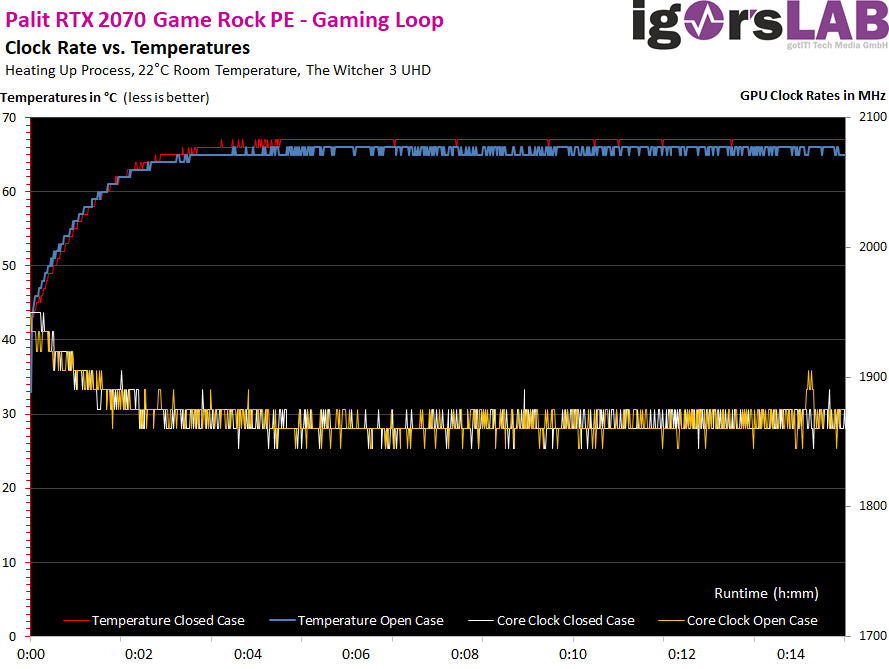
This is no different with the stress test, because the waste heat is largely the same as the power consumption.
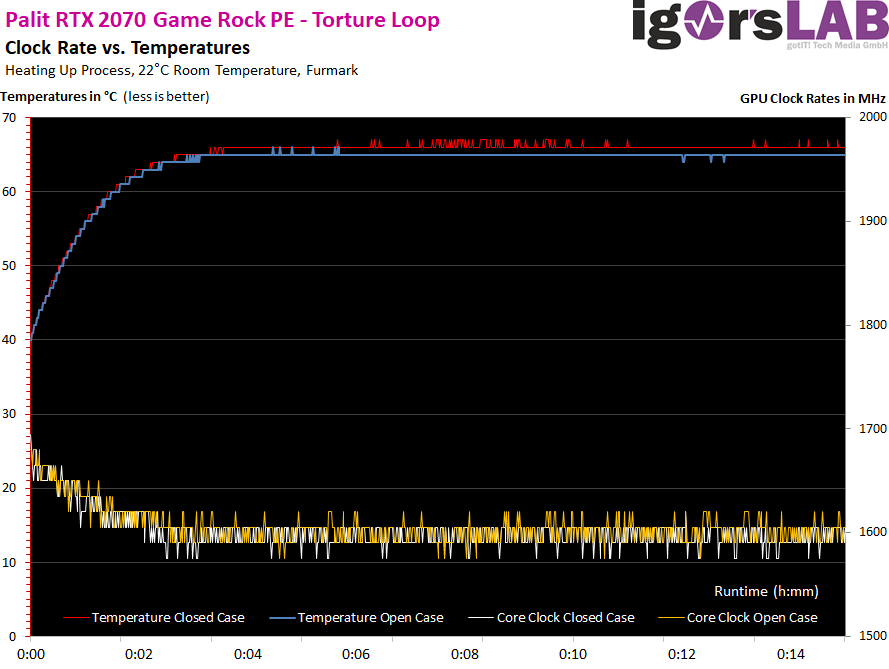
And now the whole thing again in sober numbers in table form:
| Initial Palit RTX 2070 GRPE Ex |
Final value Palit RTX 2070 GRPE Ex |
Final value GeForce RTX 2070 Founders Edition |
|
|---|---|---|---|
| Open Benchtable | |||
| GPU Temperatures |
35 °C | 64-65 °C |
76 °C |
| GPU clock | 1935 MHz | 1890 MHz |
1665 MHz |
| Ambient temperature | 22 °C | 22 °C | 22 °C |
| Closed Case | |||
| GPU Temperatures |
36 °C | 66-67 °C |
77°C |
| GPU clock | 1920 MHz | 1860/1875 MHz |
1635 MHz |
| Air temperature in the housing | 25 °C | 44 °C | 42 °C |
Board Analysis: Infrared Images
The following image gallery shows all infrared images for the gaming and the torture loop in the open structure and in the closed case. The differences are visible, but the cooler is absolutely confident in spite of everything, because it is not so much hotter in the end. What is really striking, however, is that there are no real hotspots, but the area is quite uniformly heated. This testifies to the already mentioned pavement with thermal pads and the connection of large areas to the radiator.
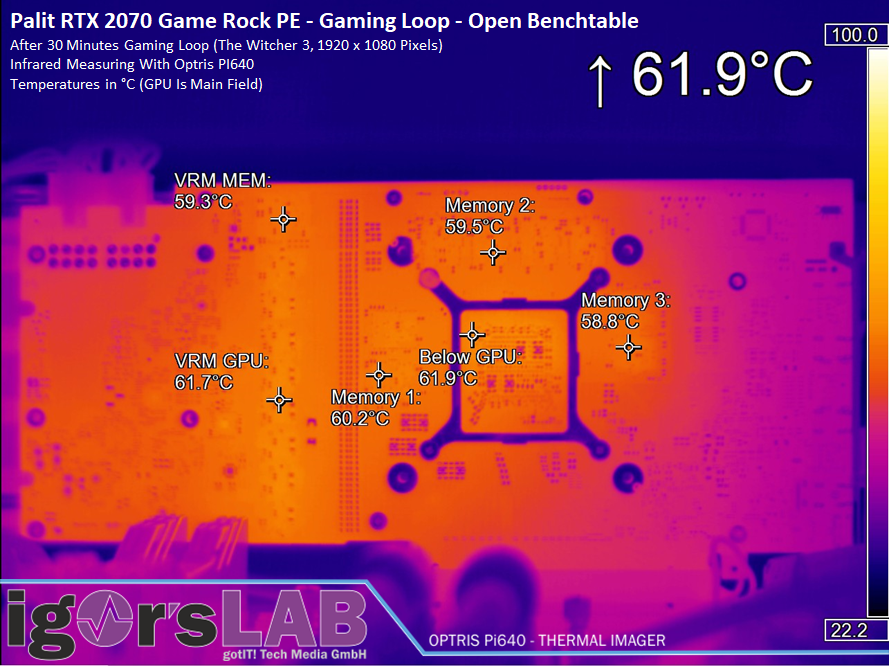
Temperatures rise by up to 5 degrees, but the fan doesn’t turn faster.
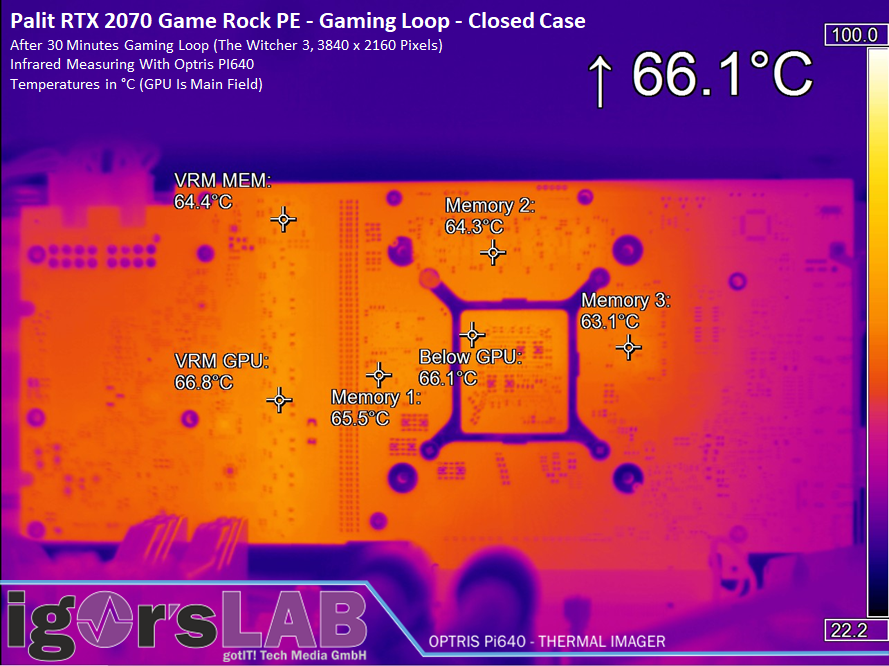
The stress test shows the same picture, even if the values in the open structure are now just above the gaming values of the closed case.
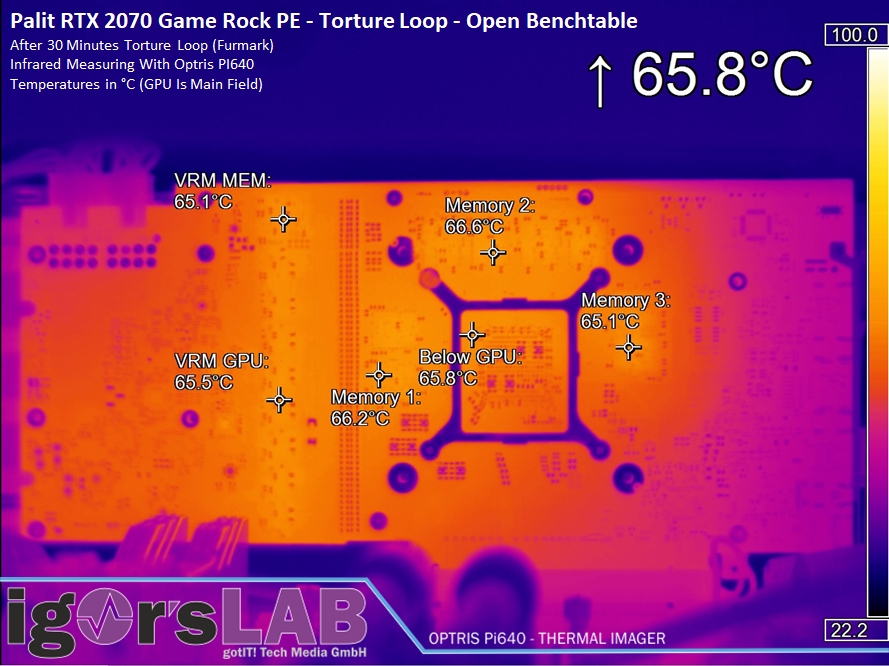
Here, in the closed structure, another 2 to 3 degrees are added. Nothing to really think about.
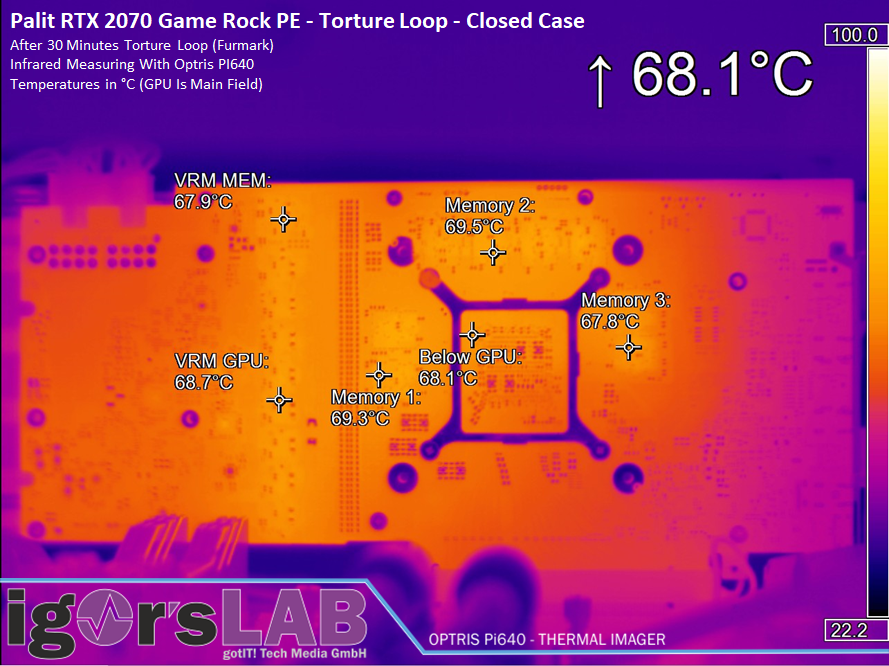
















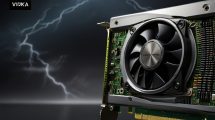
















Kommentieren